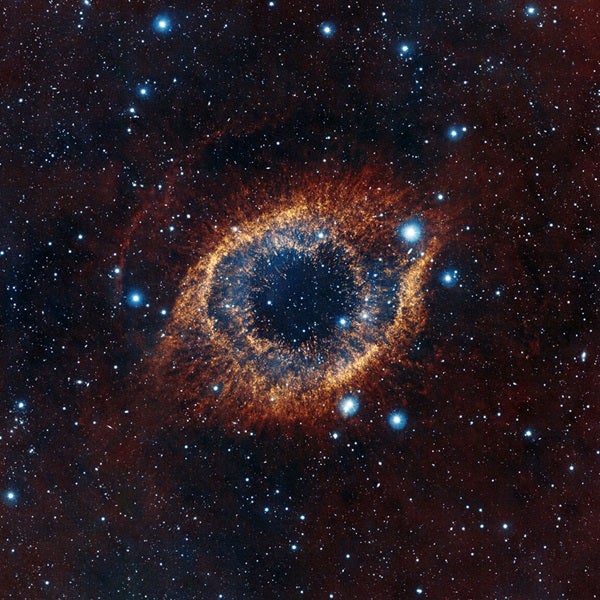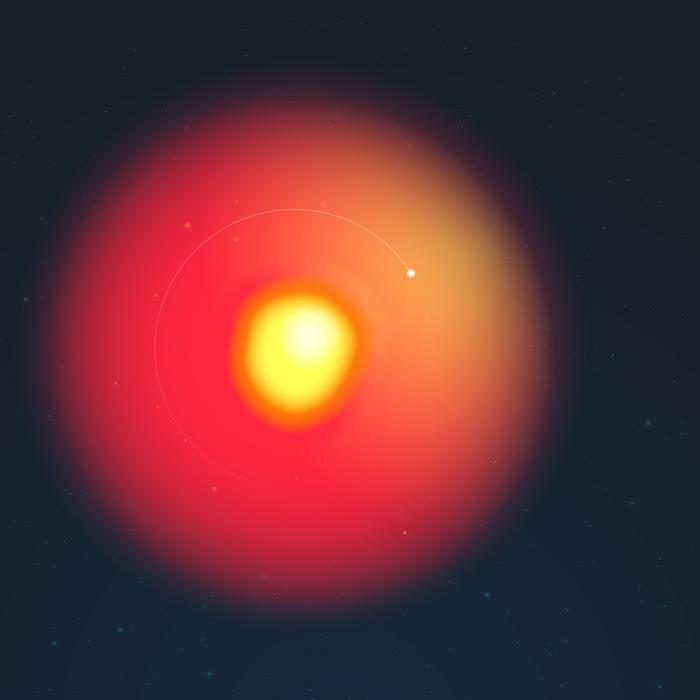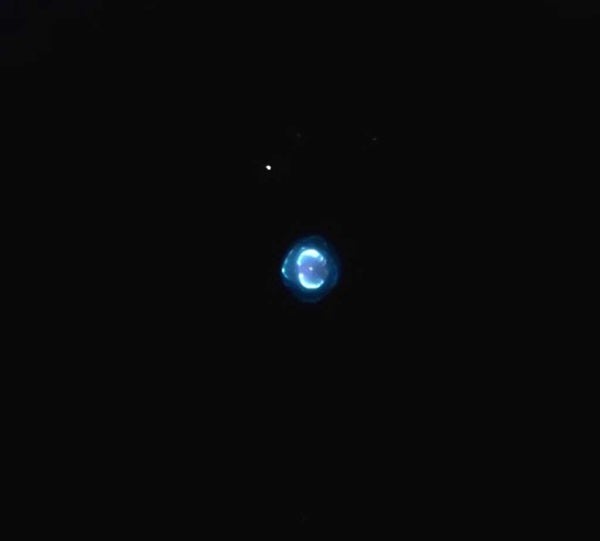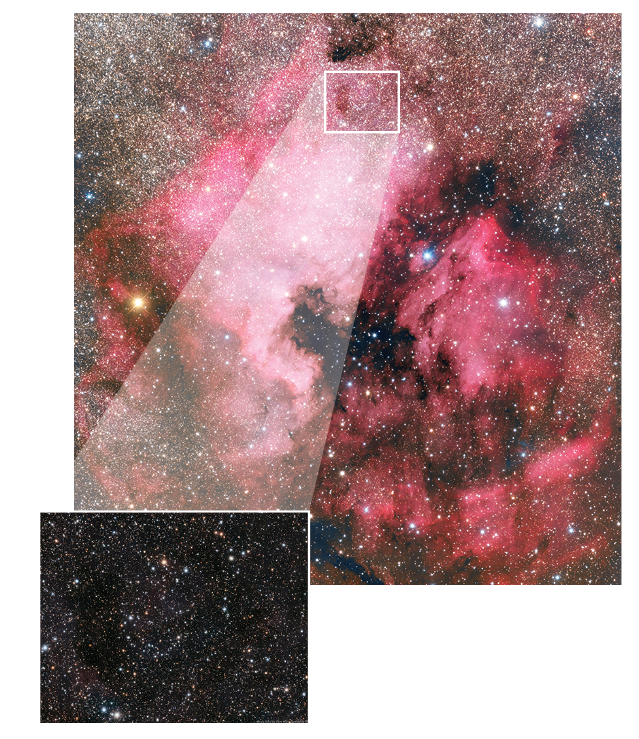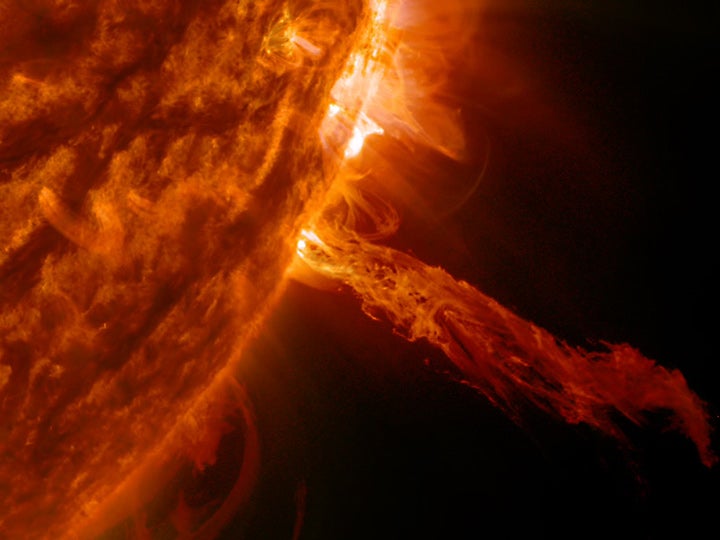The Helix Nebula is one of the closest and most remarkable examples of a planetary nebula. It lies in the constellation Aquarius the Water Bearer and is about 700 light-years away from Earth. This strange object formed when a star like the Sun was in the final stages of its life. Unable to hold onto its outer layers, the star slowly shed shells of gas that became the nebula. It is evolving to become a white dwarf star and appears as the tiny blue dot seen at the center of the image.
The nebula itself is a complex object composed of dust, ionized material, and molecular gas arrayed in a beautiful and intricate flower-like pattern and glowing in the fierce glare of ultraviolet light from the central hot star.
The main ring of the Helix is about 2 light-years across, roughly half the distance between the Sun and the nearest star. However, material from the nebula spreads out from the star to at least 4 light-years. This is particularly clear in this infrared view since red molecular gas can be seen across much of the image.
While hard to see visually, the glow from the thinly spread gas is easily captured by VISTA’s special detectors, which are very sensitive to infrared light. The 4.1-meter telescope is also able to detect an impressive array of background stars and galaxies.
The powerful vision of ESO’s VISTA telescope also reveals fine structure in the nebula’s rings. The infrared light picks out how the cooler molecular gas is organized. The material clumps into filaments that radiate out from the center, and the whole view resembles a celestial firework display.
Although they look tiny, these strands of molecular hydrogen, known as cometary knots, are about the size of our solar system. The molecules in them are able to survive the high-energy radiation that emanates from the dying star precisely because they clump into these knots, which in turn are shielded by dust and molecular gas. It is currently unclear how the cometary knots may have originated.

